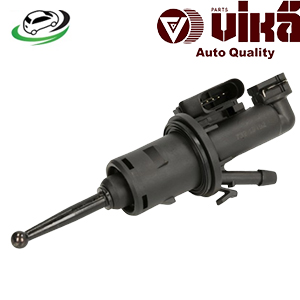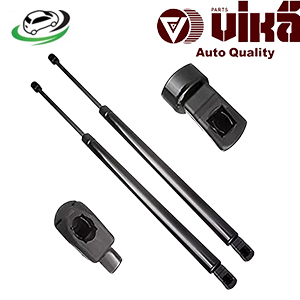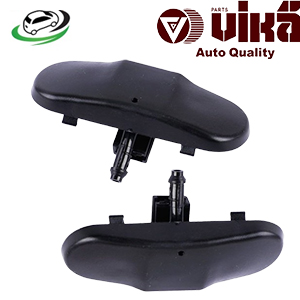-11%
Get VW Amarok 2.0/ Beetle(5C1 5C2)/ Caddy III/ Eos/ Golf V(1K1)/ Golf VI(5K1)/ Jetta III(1K2) Windshield Washer Nozzle Sprayer 5M0955985C
The windshield washer nozzle sprayer is a small yet crucial component of a vehicle’s windshield cleaning system. This component is responsible for directing washer fluid onto the windshield to help clean dirt, debris, and grime, ensuring a clear view of the road ahead. While it may seem like a minor part, the washer nozzle sprayer plays an important role in maintaining visibility and overall driving safety. In this detailed explanation, we will cover the function, types, components, benefits, common issues, maintenance tips, and how to replace a windshield washer nozzle sprayer.
1. Function of the Windshield Washer Nozzle Sprayer
The main purpose of the windshield washer nozzle sprayer is to spray washer fluid onto the windshield, allowing the wiper blades to clean the surface more effectively. Without this system, dirt, mud, bugs, and other contaminants would accumulate on the windshield, impairing the driver’s visibility. This becomes particularly important during harsh weather conditions like rain, snow, or dust storms.
Key Functions:
- Cleaning the Windshield: The sprayer evenly distributes washer fluid across the windshield to help dissolve and loosen dirt and debris.
- Enhancing Visibility: By providing a clean windshield, the nozzle sprayer ensures the driver has an unobstructed view of the road, which is critical for safe driving.
- Aiding in All-Weather Conditions: The washer system, including the sprayer, is especially useful during poor weather conditions such as heavy rain or snow, when the windshield is likely to become dirty more quickly.
2. Types of Windshield Washer Nozzle Sprayers
There are several types of windshield washer nozzle sprayers used in modern vehicles, and each type has a slightly different design and function:
1. Fan-Type Nozzles:
- These nozzles spray the washer fluid in a fan-shaped pattern, providing a wide coverage area across the windshield. This type is effective for distributing fluid evenly and ensuring that both sides of the windshield receive ample cleaning fluid.
2. Jet-Type Nozzles:
- Jet nozzles spray washer fluid in a concentrated stream. While they may not cover as wide an area as fan-type nozzles, jet nozzles are precise and effective at targeting specific areas of the windshield.
3. Heated Washer Nozzles:
- Heated washer nozzles are equipped with an internal heating element that warms the washer fluid before it’s sprayed onto the windshield. These are particularly useful in cold climates where washer fluid can freeze before it reaches the windshield.
4. Multi-Stream Nozzles:
- Multi-stream nozzles spray fluid in multiple concentrated streams. These nozzles cover a broader section of the windshield than single-stream nozzles but still deliver high pressure to effectively clean off stubborn dirt and debris.
3. Components of the Windshield Washer Nozzle Sprayer System
While the washer nozzle itself is a small part, it works within a larger system designed to ensure the windshield remains clean. The key components of the windshield washer system include:
1. Washer Nozzle:
The nozzle is the part responsible for spraying washer fluid onto the windshield. It is usually located on the hood or near the base of the windshield.
2. Washer Fluid Reservoir:
This is the tank that holds the windshield washer fluid. It is typically located under the hood, and it stores the fluid that the system uses to clean the windshield.
3. Washer Pump:
The washer pump draws fluid from the reservoir and sends it through the hoses to the nozzle. It ensures that the fluid is sprayed onto the windshield with adequate pressure.
4. Washer Hoses:
These hoses connect the washer pump to the nozzle, allowing the fluid to flow from the reservoir to the sprayer.
5. Washer Fluid:
The fluid itself is a special cleaning solution, often containing water, detergents, and anti-freezing agents to clean the windshield and prevent the fluid from freezing in cold conditions.
6. Heating Element (for Heated Nozzles):
In heated washer systems, the heating element warms the fluid to prevent freezing, making the system effective in extreme cold.
4. Benefits of a Well-Functioning Windshield Washer Nozzle Sprayer
A properly functioning windshield washer nozzle sprayer offers several benefits to both the driver and the vehicle, including:
1. Enhanced Safety:
A clean windshield improves visibility and reduces the chances of accidents. Dirt, bugs, and other debris on the windshield can obscure the driver’s view, especially when driving at high speeds or in bad weather conditions. A functioning nozzle ensures that the washer fluid is applied evenly, making it easier for the wipers to clear away contaminants.
2. Efficient Cleaning:
By spraying the washer fluid evenly across the windshield, the nozzle ensures that the cleaning process is efficient. This is particularly important when driving in areas prone to dust, dirt, or road salt.
3. Preventing Windshield Damage:
By keeping the windshield clean, the sprayer system can help prevent long-term damage. Debris like dust and small particles can scratch the glass over time if not properly cleaned.
4. All-Weather Functionality:
Heated nozzles or nozzles designed for winter use allow the washer system to function effectively even in freezing temperatures. This prevents ice from forming on the windshield and ensures proper cleaning in snowy or icy conditions.
5. Common Issues with Windshield Washer Nozzles
Over time, windshield washer nozzles can encounter various problems that affect their performance. Some of the most common issues include:
1. Clogged Nozzle:
Dirt, debris, or mineral deposits from the washer fluid can block the tiny openings in the nozzle, reducing or completely stopping the flow of fluid. A clogged nozzle often results in uneven spray patterns or no spray at all.
2. Misaligned Nozzle:
The nozzle can become misaligned over time due to external factors such as car washes or minor impacts. A misaligned nozzle won’t spray fluid where it’s needed, leaving parts of the windshield uncleaned.
3. Leaking Hoses:
If the washer hoses develop cracks or leaks, the fluid may not reach the nozzle, reducing the system’s effectiveness. Leaks can also lead to puddles of washer fluid forming under the car, which can be a sign of a problem.
4. Pump Failure:
If the washer pump fails, fluid will not be drawn from the reservoir to the nozzle. This can result in the system not working at all, even if the reservoir is full and the nozzles are clear.
6. Maintenance and Tips for Longevity
To ensure the windshield washer nozzle sprayer continues functioning optimally, regular maintenance is key. Here are some maintenance tips:
1. Use the Correct Washer Fluid:
Always use washer fluid that is designed for your vehicle’s climate. In winter, use fluid with antifreeze properties to prevent freezing. Avoid using just water, as it can freeze and clog the system.
2. Clean the Nozzles Regularly:
Inspect and clean the nozzles every few months. If they become clogged, use a fine needle or pin to gently clear out any debris.
3. Check the Washer Fluid Level:
Regularly check the fluid level in the washer fluid reservoir and top it up when necessary. Low fluid levels can reduce the effectiveness of the system.
4. Inspect the Washer Hoses:
Periodically check the washer hoses for signs of wear, cracks, or leaks. Replace any damaged hoses to maintain fluid flow to the nozzles.
5. Align the Nozzles:
If you notice that the spray isn’t reaching the windshield correctly, you may need to realign the nozzles. This can be done by gently adjusting the nozzle with a pin or a small tool.
7. Replacing a Windshield Washer Nozzle Sprayer
If the nozzle is damaged beyond repair, replacing it is a relatively straightforward process. Here are the basic steps for replacing a windshield washer nozzle sprayer:
1. Locate the Nozzle:
The nozzles are typically located on the vehicle’s hood or the base of the windshield. Open the hood to gain access to the nozzles and the washer hose connections.
2. Remove the Old Nozzle:
Carefully detach the washer hose from the back of the nozzle. Depending on the design, the nozzle may be clipped or screwed into place. Use a screwdriver or pliers to remove it.
3. Install the New Nozzle:
Place the new nozzle in the same position and secure it using the appropriate clips or screws. Reattach the washer hose to the back of the nozzle.
4. Test the System:
After installation, test the system by spraying washer fluid onto the windshield. Make sure the spray pattern is correct and that there are no leaks.
Conclusion
The windshield washer nozzle sprayer may be a small part of your vehicle, but it plays a vital role in ensuring clear visibility and safety on the road. Regular maintenance, such as cleaning the nozzles and checking fluid levels, can help prevent common issues like clogs or misalignment. If the nozzle fails, replacing it is a simple task that can restore the system’s functionality and keep your windshield clean for miles to come.
Follow us on Facebook for more parts.




Reviews
Clear filtersThere are no reviews yet.